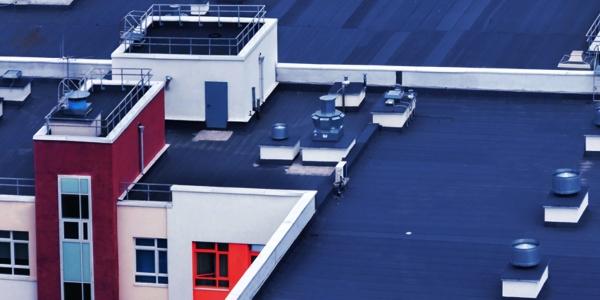Where Europe’s Green Roof Revolution Started

By Cass Jacoby, RCS Reporter.
Basel, Switzerland mandated green roofs, now other European cities are following suit to combat climate change.
How do you reduce flooding, improve biodiversity and lower energy costs? You cover every building in plants. On top of every flat roof in Basel, Switzerland you will find greenery, making it literally the greenest city in the world. New and old buildings alike are covered in wildflowers and gardens, per city mandates to cover all empty roof space with biodiverse greenery.
The city boasts the most green space per inhabitant in the world, with five meters of green space per person according to Green Roofs. The rooftop gardens are more than a merely beautiful architectural feature - they are a critical component of the city’s climate policy.
This mandate is part of Basel’s biodiversity strategy. For the past 15 years, green spaces have been mandatory on all new and retrofitted buildings with flat roofs says the Optimist Daily. Now more than 1 million square meters of green roofs have been constructed, making it the leading city in ‘greening’ its urban spaces. Burgeoning evidence finds that cities are healthier if they are greener and Basel is serving as a prime example of the benefits of greening city roofs.
Dr. Stephan Brenneisen, a researcher at the Institute for the Environment and Natural Resources in Zurich, explains to Euronews.green: “We noticed that [flat roofs] were not being used enough and [could be] valuable areas for nature. That’s why we started, together with our colleagues from the building department, and in particular, the then Director Barbara Schneider, to integrate these areas into the planning law, to define guidelines and this to implement these projects in Basel.”
The rooftop shrubbery has slashed the city's net emissions and has proven that biodiversity can flourish in a modern city. According to TimeOut almost 80 species of beetles have been spotted in Basel, and the gardens provide refuge for 175 plant types, including nine kinds of orchid. Further, the green roofs lessen the threat of flash floods in cities with the soil reducing water run-off by up to 20 percent.
Locals have been fans of the mandate due to the massive cuts in their energy bills. The leaf layers of their roof insulate their homes in the winter and keep the temperature of the city around five degrees cooler in the summer. Implementing urban green spaces into the construction law guarantees sustainable changes in the city’s architecture will be long-lasting.
Stephan is confident that an environmental revolution within cities is attainable saying “societies are willing to change,” he tells green roofs. While it took a law change to drive these changes in Basel, the city is an inspiration for greening cities across the world.
Stay up to date with the latest roofing industry news when you sign up for the RCS Week in Roofing e-news.
Photo credit: Climate ADAPT























Comments
Leave a Reply
Have an account? Login to leave a comment!
Sign In